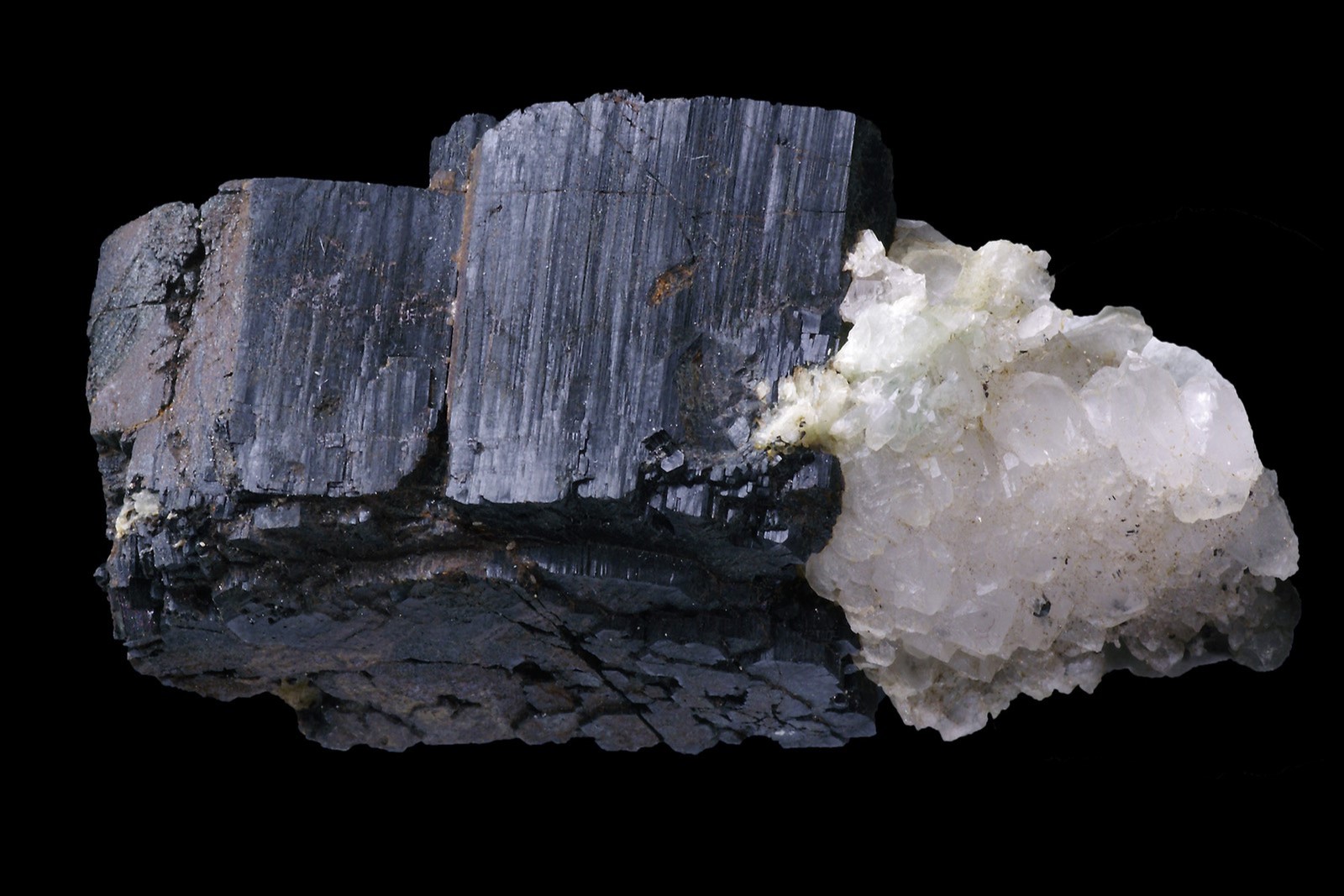
Babingtonite is a fascinating mineral that often goes unnoticed. Found in places like the United States, China, and Italy, this mineral is known for its striking black to dark green color. Babingtonite crystals can form in a variety of shapes, including prismatic and tabular. What makes it unique? It's one of the few minerals that contain both iron and manganese. This combination gives it magnetic properties, making it a favorite among collectors. Whether you're a geology enthusiast or just curious, learning about Babingtonite can be both fun and educational. Ready to dive into 40 intriguing facts about this captivating mineral? Let's get started!
Key Takeaways:
- Babingtonite is a rare and fascinating mineral with unique properties, often found in basaltic rocks. Its dark color, vitreous luster, and association with other minerals make it a prized collector's item.
- This mineral, named after William Babington, has important applications in geology and mineralogical research. Its resistance to weathering and significance in locating valuable minerals make it a valuable educational tool and a prized specimen for collectors.
What is Babingtonite?
Babingtonite is a fascinating mineral with a rich history and unique properties. Named after the English mineralogist William Babington, this mineral is often found in basalt and other igneous rocks. Let's dive into some intriguing facts about Babingtonite.
-
Babingtonite is a silicate mineral that contains iron, calcium, and manganese.
-
It was first discovered in Arendal, Norway in 1824.
-
Babingtonite is often found in basaltic rocks, particularly those that have undergone hydrothermal alteration.
-
The mineral is typically black or dark green in color.
-
Babingtonite has a monoclinic crystal system, meaning its crystal structure is asymmetrical.
-
It has a Mohs hardness of 5.5 to 6, making it relatively hard but not as hard as quartz.
-
Babingtonite is often associated with other minerals like prehnite, epidote, and quartz.
-
The mineral is named after William Babington, an English physician and mineralogist.
-
Babingtonite can be found in various locations around the world, including China, the United States, and Italy.
-
It is often used as a collector's mineral due to its unique appearance and rarity.
Physical Properties of Babingtonite
Babingtonite's physical properties make it a unique and interesting mineral to study. Here are some key characteristics that set it apart.
-
Babingtonite has a vitreous to sub-metallic luster, giving it a shiny appearance.
-
The mineral has a specific gravity of 3.3 to 3.4, which is relatively high for silicate minerals.
-
Babingtonite's streak is greenish-gray, which can help in its identification.
-
It exhibits perfect cleavage in one direction, meaning it breaks smoothly along a specific plane.
-
The mineral is brittle, so it can easily break or chip.
-
Babingtonite crystals are often prismatic or tabular in shape.
-
The mineral can form twinned crystals, where two crystals grow together in a specific orientation.
-
Babingtonite is often found in radiating clusters or massive forms.
-
It can fluoresce under ultraviolet light, although this is not a common property.
-
Babingtonite has a refractive index of 1.72 to 1.74, which measures how much it bends light.
Chemical Composition of Babingtonite
The chemical composition of Babingtonite is complex and fascinating. It includes several elements that contribute to its unique properties.
-
Babingtonite's chemical formula is Ca2(Fe,Mn)Si5O14(OH).
-
The mineral contains iron, which gives it its dark color.
-
Calcium is another major component of Babingtonite.
-
Babingtonite also contains manganese, which can substitute for iron in its structure.
-
The presence of silicon in Babingtonite makes it a silicate mineral.
-
Babingtonite can contain trace amounts of aluminum and magnesium.
-
The mineral's chemical composition can vary depending on its geological environment.
-
Babingtonite forms in hydrothermal veins, where hot, mineral-rich water flows through cracks in rocks.
-
The mineral can also form in metamorphic rocks, which have been altered by heat and pressure.
-
Babingtonite's chemical composition makes it resistant to weathering, so it can persist in the environment for long periods.
Uses and Significance of Babingtonite
While Babingtonite is not widely used in industry, it has several important applications and significance.
-
Babingtonite is primarily used as a collector's mineral due to its rarity and unique appearance.
-
The mineral is also studied by geologists to understand the conditions under which it forms.
-
Babingtonite can be used as an indicator mineral to locate other valuable minerals and ores.
-
The mineral's unique properties make it a subject of interest in mineralogical research.
-
Babingtonite is sometimes used in gemology, although it is not a common gemstone.
-
The mineral can be found in museum collections around the world.
-
Babingtonite has been featured in several scientific publications and studies.
-
The mineral's name honors William Babington's contributions to mineralogy.
-
Babingtonite's unique properties make it a valuable educational tool for teaching about minerals.
-
The mineral's rarity and beauty make it a prized specimen for collectors and enthusiasts.
Babingtonite's Unique Charm
Babingtonite, a rare mineral, captivates with its striking black or dark green crystals. Found in places like the USA, China, and Italy, it often forms in basalt and granite. This mineral's unique structure and composition make it a favorite among collectors and geologists. Its name honors William Babington, a notable Irish physician and mineralogist. Babingtonite's rarity and beauty make it a prized specimen in many collections. Whether you're a seasoned collector or just starting, adding babingtonite to your collection is a true gem. Its distinct appearance and fascinating history ensure it stands out. So next time you come across this mineral, remember its unique charm and the story behind it. Babingtonite isn't just a mineral; it's a piece of Earth's history waiting to be discovered.
Frequently Asked Questions
Was this page helpful?
Our commitment to delivering trustworthy and engaging content is at the heart of what we do. Each fact on our site is contributed by real users like you, bringing a wealth of diverse insights and information. To ensure the highest standards of accuracy and reliability, our dedicated editors meticulously review each submission. This process guarantees that the facts we share are not only fascinating but also credible. Trust in our commitment to quality and authenticity as you explore and learn with us.


